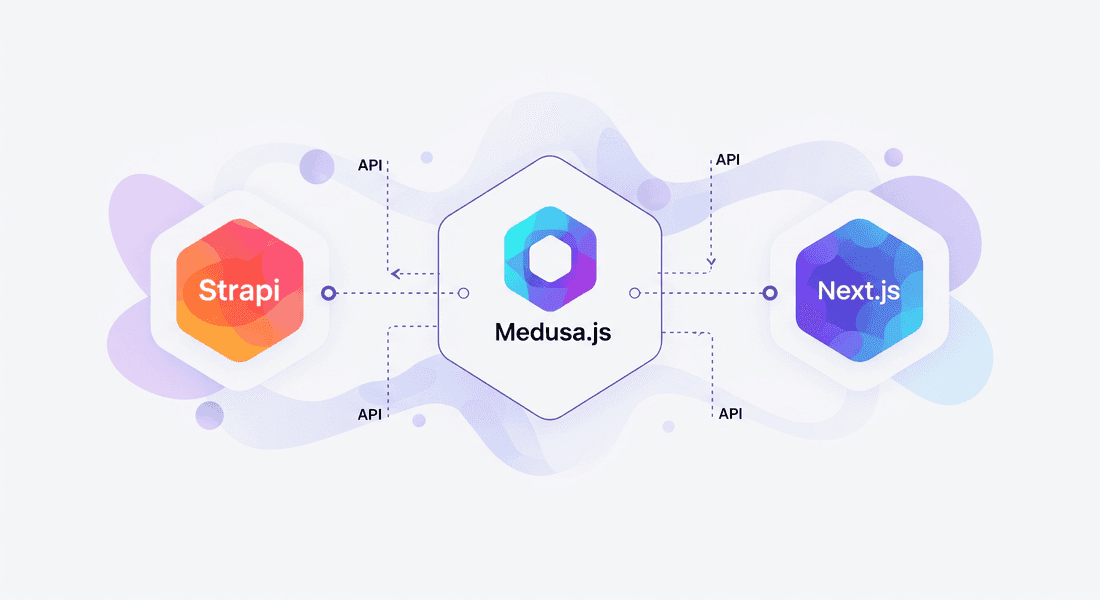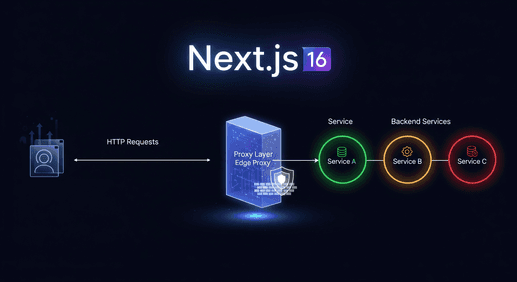Headless CMS in E-Commerce: How to Integrate Medusa for Scalable, Content-Rich Online Stores

Modern e-commerce isn’t just about adding products to a cart, it’s about delivering dynamic, content-driven shopping experiences across multiple touchpoints. Whether you’re running a single storefront or a multi-channel brand, customers expect fast, personalized, and SEO-friendly experiences.
This is where a headless Content Management System (CMS) becomes a game-changer. When paired with a headless commerce engine like Medusa and a modern React framework like Next.js, you can combine rich, flexible content with fast, API-driven commerce for a future-proof e-commerce stack.
What is a Headless CMS in the E-Commerce Stack?
A Content Management System (CMS) is software that lets you create, edit, and organize website content without touching code.
In a headless architecture, your CMS doesn’t dictate how content is displayed. Instead, it delivers content through an API, allowing you to use it across any frontend — websites, mobile apps, digital signage, or social commerce platforms.
In e-commerce terms:
- Content is separated from the storefront UI - product descriptions, blogs, and banners live in the CMS, while your storefront fetches them via API.
- Editors and marketers can update content instantly without asking developers to deploy changes.
- Developers focus on functionality, not content bottlenecks, because the CMS provides a safe editing space for non-technical teams.
Think of it like Google Docs for your store’s content, except it integrates directly into your e-commerce platform.
Defining CMS in the E-Commerce Stack
A Content Management System (CMS) is a tool that lets you create, edit, and organize website content without touching code.
In e-commerce terms:
- It separates content (product descriptions, blog posts, banners) from your storefront (the part customers see and shop in).
- Editors and marketers can add or update pages in minutes without breaking anything.
- Developers don’t have to be “content gatekeepers” — the CMS is the safe workspace for all non-technical updates.
Think of it as Google Docs for your website content, but integrated into your online store.
Why Use Medusa.js with a Headless CMS?
Medusa is an open-source, Node.js-based headless commerce engine. Unlike traditional monolithic platforms like Magento or Shopify, Medusa separates backend commerce logic from the frontend, exposing APIs for product management, checkout, orders, and more.
A CMS complements Medusa by adding a storytelling layer - blog posts, landing pages, and rich product details - while the frontend (e.g., Next.js) stitches together content and commerce into one seamless experience.
Practical examples:
- Blog posts – Store and manage articles in the CMS, then display them alongside Medusa product data for shoppable editorial content.
- Campaign landing pages – Build seasonal promotions in the CMS; fetch live product availability from Medusa.
- Rich product pages - Pull videos, FAQs, and extra imagery from the CMS while keeping inventory and pricing synced with Medusa.
- SEO optimization – Use Next.js Static Site Generation (SSG) or Server-Side Rendering (SSR) to ensure Google instantly indexes your content.
Key Factors When Choosing a CMS for Medusa.js
1. Cloud (SaaS) vs. Self-Hosted
- Cloud (SaaS) – Fast setup, zero maintenance, and predictable costs. Great for small-to-medium teams without DevOps resources. Downsides: less customization and potential cost creep as your content and traffic grow.
- Self-Hosted – Full control and customization potential with lower long-term hosting costs. Requires in-house infrastructure, deployments, and security management.
2. Developer Flexibility vs. Editor Usability
- Payload CMS – Highly developer-centric, perfect for building custom workflows but may require training for editors.
- Strapi �– Balances developer freedom with an intuitive admin panel.
- Sanity / Contentful – Prioritize editor experience, real-time collaboration, and enterprise-level content delivery.
3. Community and Plugin Ecosystem A strong community means faster problem-solving and ready-made integrations. Example: Strapi’s plugin marketplace offers role-based permissions, analytics tools, and image optimization out of the box.
CMS Comparison for Medusa Integration
| CMS | Type | Key Features | Best For |
|---|---|---|---|
| Strapi | Open-source (self-hosted/cloud) | Customizable, large OSS community, plugin ecosystem | Teams wanting balance between dev control & editor usability |
| Payload | Open-source (self-hosted/cloud) | Developer-centric, clean editor, powerful APIs | Dev-heavy teams building tailored workflows |
| Sanity | Headless SaaS | Real-time collaboration, content portability | Content-heavy teams with remote collaboration needs |
| Contentful | Headless SaaS | Enterprise-ready, robust APIs, scalable delivery | Large organizations needing stability & global reach |
Example Stack: Medusa + Strapi + Next.js
Here’s how a typical integration might work:
- Medusa – Handles product catalog, checkout, orders, and authentication.
- Strapi – Manages homepage banners, blog posts, landing pages, and SEO metadata.
- Next.js – Consumes APIs from both Medusa.js and Strapi to render a unified, fast storefront.
This decoupled architecture allows developers and content teams to work in parallel, launching campaigns, updating product pages, or improving SEO without blocking each other.
Benefits of a Headless CMS with Medusa
- Faster Time-to-Market – Launch new content or campaigns without code deployments.
- SEO Performance – Combine Medusa’s API data with Next.js SSR/SSG for instant search indexing.
- Scalability – Serve content to multiple storefronts, mobile apps, and even IoT devices.
- Localization – Manage multi-language content for global customers.
- Personalization – Target content based on user behavior or location.
Conclusion
Pairing a headless CMS with Medusa and a Next.js storefront creates a powerful, flexible, and future-proof e-commerce platform. This architecture separates content from commerce, enabling faster updates, better SEO, and limitless customization.
As online retail moves toward API-first, modular systems, integrating Medusa with the right CMS, whether Strapi, Contentful, Sanity, or Payload, gives you the foundation to deliver content-rich, high-performance shopping experiences that scale with your brand.





